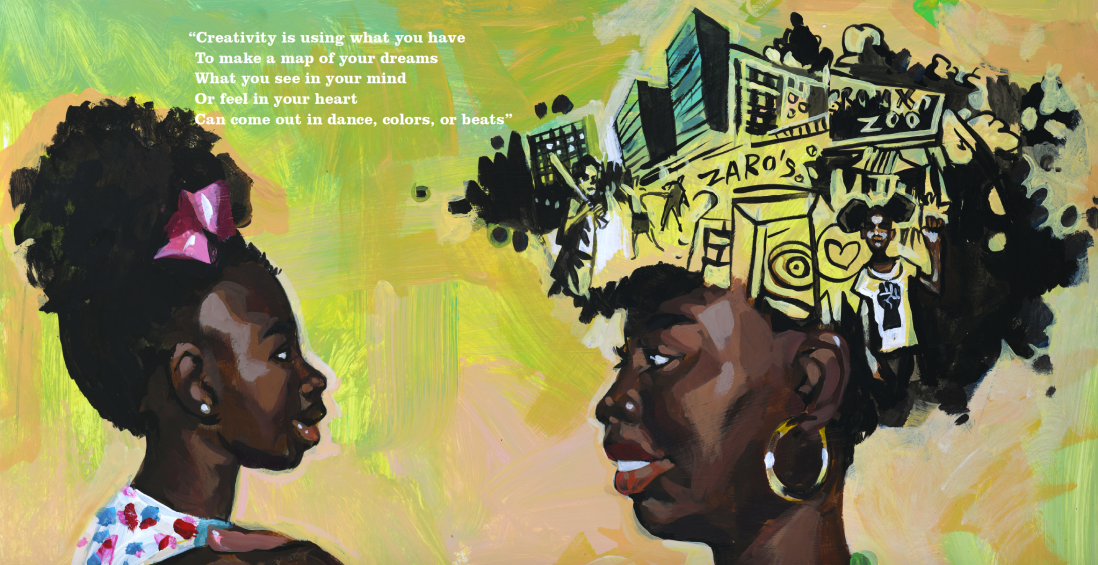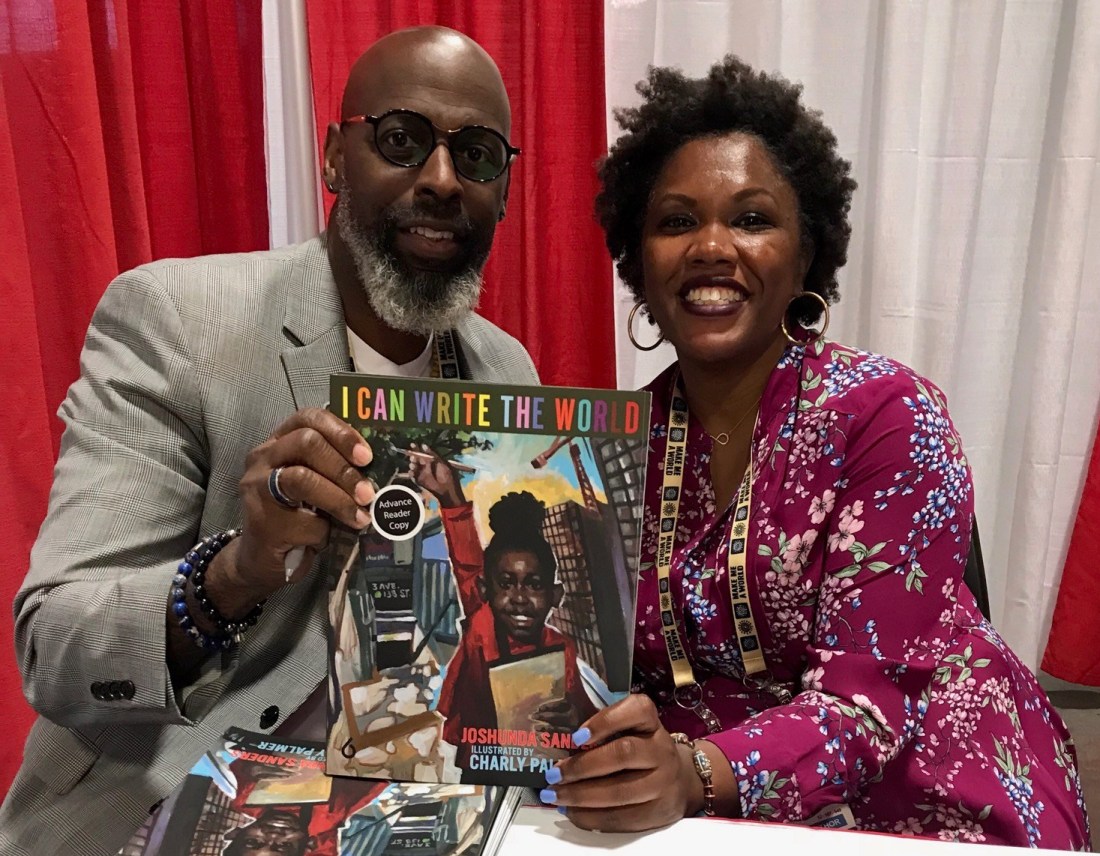I made this in case it’s soothing or comforting or just a break from the day to day during this time to hear I Can Write the World. Sending you love and wishes for safety and health in this time.
Tag: children’s books
I Can Write the World at ALA 2019
I had a whirlwind weekend launching I Can Write the World at the American Library Association Conference in D.C. Librarians, teachers and others were so receptive to the book that I was the first author in my cohorts to run out of books both on Saturday night at a lovely Ingram reception at Spire and on Sunday afternoon after a great panel discussing the importance of representation in Children’s books. I even got to see a former library professor who popped up in the signing line (thanks for coming by, Stan!).
The most common question librarians had is one that most people ask me, which is “What is this book about?” This comes up right after they say, “Wow, the book is so beautiful!” Which makes my heart sing.
The answer is that I Can Write the World is about 8-year old Ava Murray, who lives in the South Bronx. She is named after the brilliant filmmaker Ava DuVernay and the incredible legal scholar, Episcopalian priest & poet Rev. Dr. Pauli Murray, who created the legal precedent known as Jane Crow and, were the world ready for her in her time, might have had a much easier time accepting what we would call her trans identity in this time.
In I Can Write the World, Ava notices the beauty of the Bronx that she knows and loves is at odds with how journalists often depict her world. On the news, a little girl about her age is fined for tagging, which confuses Ava because she sees the colorful murals around her as making the city more beautiful. Her mother, Kim, explains that journalists are like the window frame around their living room window and they shape what we see when we look out of it. Ava decides that she wants to become a journalist so that she can be just like them and shape the world they see.
The first book in the series has Ava exploring more of hip hop culture and how it came to be through a prose poem. I’m honored to say that one of my writing heroines Jacqueline Woodson has called I Can Write the World, “Lovely and timely.” I hope you will find it to be the same. Thank you so much to everyone who has pre-ordered and shared your thoughts with me about the book. I’d be so grateful if you could also write reviews and spread the word. You can find the book on Amazon, Barnes & Noble and several other outlets.
Next stops for I Can Write the World signings are the Children’s Institute (Ci7) & PrideFest on Sunday — which includes a book giveaway for the first 100 kids.
My new children’s book series: I Can Write the World

I am just settling back into being home after a quick, amazing trip to the Bologna Children’s Book Fair – one of the world’s largest international fairs for children’s books – where I discussed the children’s book series I’ve been working on over the past year, I Can Write the World. I was in Bologna as part of a “Black Books Matter” panel meant to commemorate the 50th anniversary of the Coretta Scott King Awards.
I’m delighted to share the cover and one of my favorite images from award-winning artist Charly Palmer from the book, which is the first publication of Six Foot Press, coming June 15th. It’s available for pre-order on Amazon .
I Can Write the World is the story of an 8-year-old Bronx girl named Ava Murray, named for the trailblazers Ava DuVernay and Rev. Pauli Murray (two women who have changed the course of history by uncovering stories with beauty that might otherwise remain lost, hidden or forgotten) who decides to become a journalist after seeing a different version of her neighborhood on television than the one she normally experiences.
I originally wrote a book that was for older kids without knowing it — my default is always to write more complex stories because even the lives of our children are, unfortunately, more nuanced than we might prefer. Carla Precht, the Executive Director of the Bronx Children’s Museum, and her team were instrumental in offering me feedback of child development experts who liked the narrative but thought it might be geared toward older readers in its previous iteration. So inspired by the likes of Jacqueline Woodson and Elizabeth Acevedo, I revisited my original writing love, poetry and wrote it as a picture book in verse. I felt like the result was much closer to my heart. I hope you will sense that too.
I recently went to a workshop for storytellers and educators at the Caribbean Cultural Center and African Diaspora Institute where Juliet Gray, a phenomenal educator and storyteller, shared with us that the average Black six year old child enters elementary school with around 3,000 words, which her white peer is likely to have 20,000. That astounding figure has stuck with me, because it only reinforces how important a book like I Can Write the World is — to give young readers access to a world that looks like them, sounds like them and makes them feel like they can do and be anything they want.









